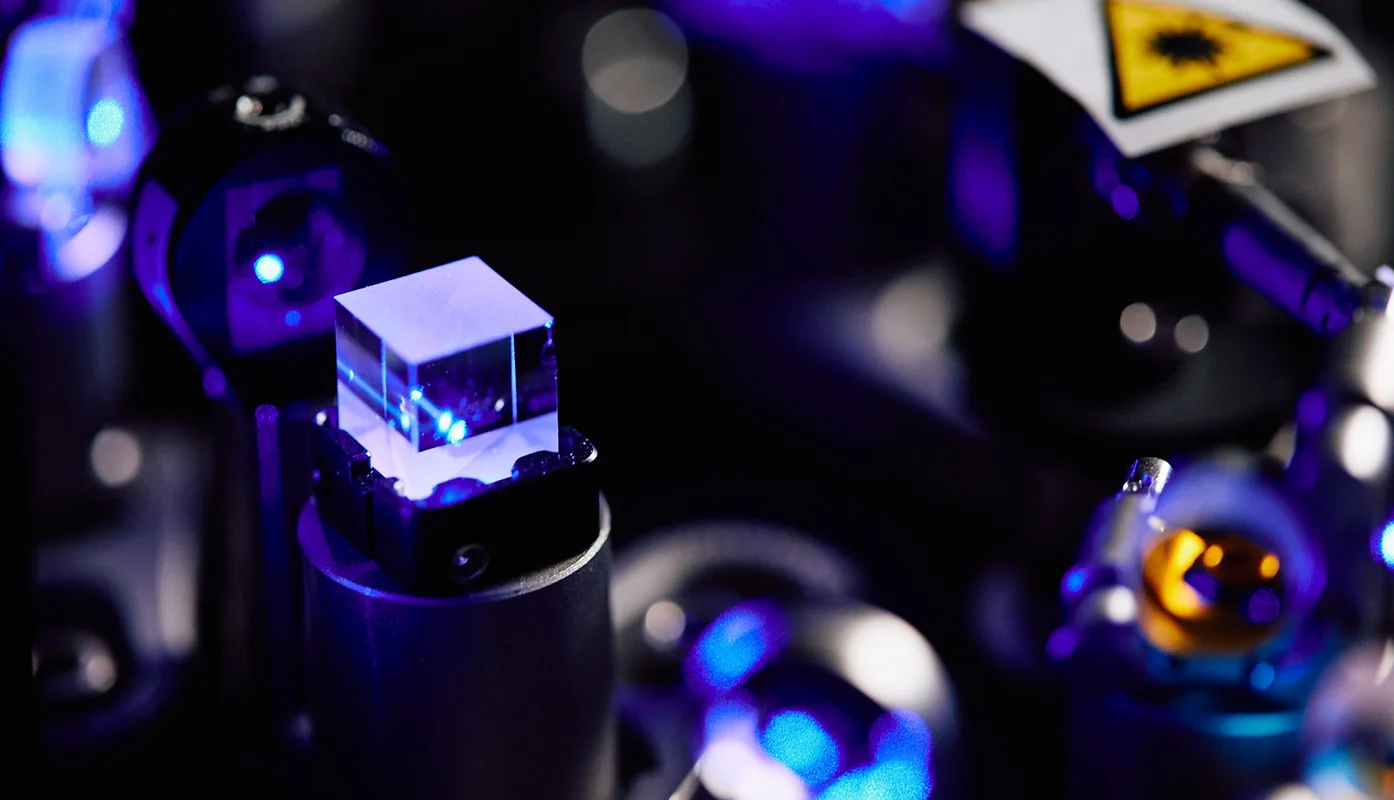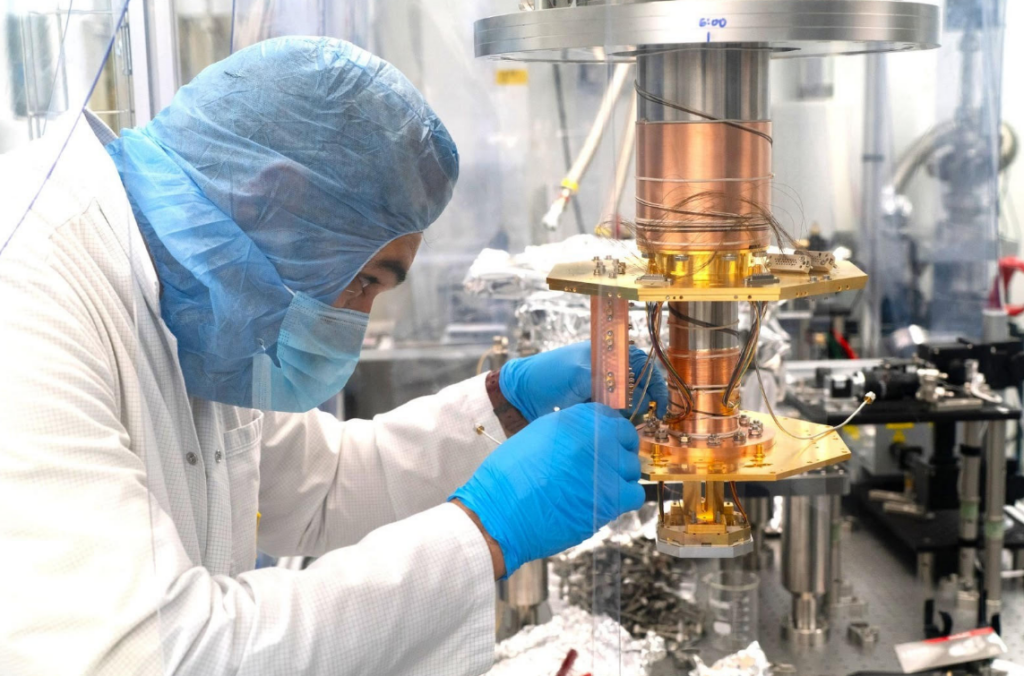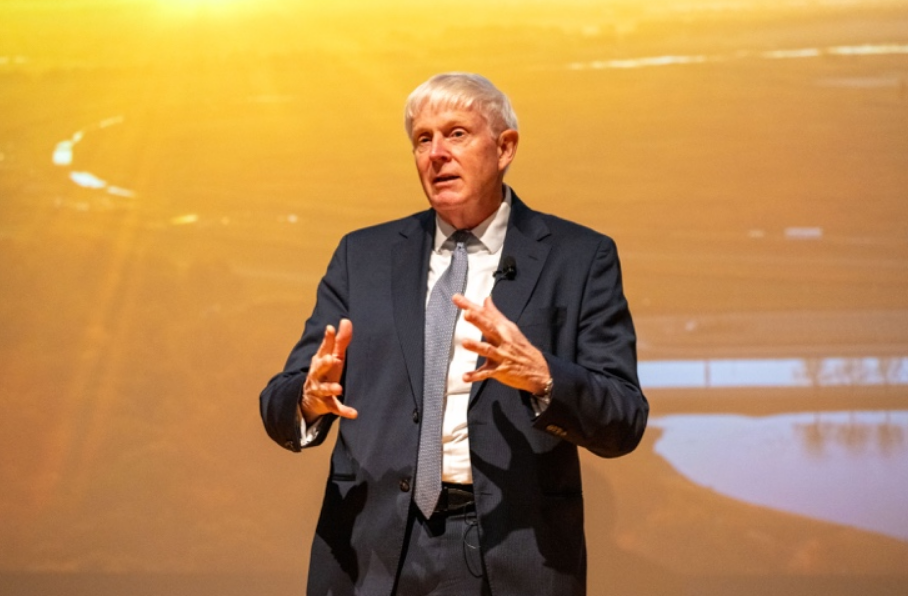Insider Brief
- Oxford Ionics, a startup solving the critical scalability issues facing the future of quantum computing, has raised £30 million in Series A funding.
- The company’s processor integrates into semiconductor chips by combining leading qubit technology – trapped ions – with patented Electronic Qubit Control (EQC) technology
- The highest-performing quantum systems to date have been powered by trapped-ions, and of those systems, Oxford Ionics’ holds multiple world records for quantum gate error rates, quantum coherence times, and quantum networking performance
- The funding was led by Oxford Science Enterprises and Braavos Investment Advisers, with Lansdowne Partners, Prosus Ventures, Torch Partners, Hermann Hauser and 2xN
- Image: Oxford Ionics
PRESS RELEASE — Oxford Ionics – the multi world record-breaking startup solving the critical scalability issues facing the future of quantum computing – has raised £30 million in Series A funding from some of the world’s leading quantum and tech investors. The round was led by Oxford Science Enterprises and Braavos Investment Advisers. Lansdowne Partners, Prosus Ventures, 2xN, Torch Partners and Hermann Hauser (founder of chip giant ARM) also participated.
This latest funding round will be used to further Oxford Ionics’ expansion with the hiring of people in roles across the company’s functions, from software developers and engineers to designers, scientists and a growing back-office team.
Founded in 2019 by Dr Chris Ballance and Dr Tom Harty, Oxford Ionics takes a unique approach to designing and scaling one of the most promising quantum computing technologies – trapped-ions. As multiple technologies vie for position in our race for a quantum future, trapped-ions have long proved superior. The highest-performing quantum systems to date have all been powered by trapped-ions, and of those systems Oxford Ionics’ has been shown to consistently outperform the others.

Ballance told The Quantum Insider in an email interview that the effectiveness of quantum computing will revolve around error rate and qubit connectivity.
“The key metrics for any quantum computer are the error rate and qubit connectivity,” said Ballance. “Without those, one can’t say whether a quantum computer with 1,000,000 qubits is better than one with 100 qubits. A postage-stamp sized quantum processor chip with just a few hundred perfect qubits can solve problems beyond the reach of any supercomputer, but if the qubits aren’t good enough the same problem can take a machine the size of a warehouse.”
While quantum computing startups often tout the size of their devices, OI wants to build bigger and better machines.
“Everything we do at OI is about building better, not just bigger quantum computers,” said Harty. “That’s why we build our devices with complete connectivity between qubits, and use the technology which has the lowest error rates ever demonstrated. Controlling our qubits using electronics integrated into silicon chips allows us to do this with processors built in the same factories that make chips for cars and phones. Our roadmap over the next two years is focussed on de-risking quantum processors with thousands of useful qubits. Among other things, this means demonstrating that we can improve our already record error rates and demonstrating integration into a silicon chip while controlling issues such as qubit-qubit cross-talk.”
In tests, Oxford Ionics’ trapped-ion technology holds world records for the highest performance quantum operations, longest quantum coherence time, and highest performance quantum network. It has also achieved the highest performance ever demonstrated while using chips manufactured on a semiconductor production line.
Ballance said: “If we’re to identify and unlock the true power and potential of quantum computing we need to crack the critical issues that are holding it back – scalability, integration and performance. Our unique trapped-ion approach has been developed to address all three. At Oxford Ionics, we’re focused on building technologies that will help quantum computing finish the race, not just take small, incremental steps. Our latest round of funding, and the knowledge, insight and expertise of our new investors bring us even closer to this goal.”
Record-breaking dominance
Oxford Ionics’ record-breaking dominance stems from the firm’s pioneering approach. Until now, trapped–ion systems have largely relied on lasers to control qubits. This approach performs well for small processors, but becomes untenable and error prone as the size of the processor scales, and the number of qubits increases.
Instead of lasers, Oxford Ionics’ trapped-ion processors use a proprietary, patented Electronic Qubit Control (EQC) system to control the qubits. This allows them to combine the unrivaled quantum performance of individual atoms with the scalability and reliability of electronics integrated into silicon chips.
Not only does this approach deliver the highest level of performance possible, it does so in a way that makes the Oxford Ionics processors integrable and scalable as standard – a first for any quantum computing technology. The startup has even proven the potential of this approach in a real-world environment, via its partnership with semiconductor manufacturer Infineon Technologies AG on its standard production line.
World-record breaking tech
Such is the team’s authority in this space, Ballance’s research into experimental quantum key distribution was cited in the scientific release that accompanied this year’s Nobel Prize in Physics. Today, the Oxford Ionics team is made up of the brightest minds across the quantum sector who between them have over 100 years’ of expertise in this space; 10 PhDs and more than 130 peer-reviewed scientific publications.
This team has grown 10-fold over the past three years and it’s its combination of pioneering vision and deep expertise that has seen it attract some of the leading quantum and tech investors of the past three decades.
Before co-founding the quantum-inspired venture capital firm 2xN, investor Niels Nielsen was an early backer, and former chairman of Cambridge Quantum. Cambridge Quantum recently merged with Honeywell Quantum Solutions to form Quantinuum, one of the world’s largest integrated quantum computing companies. Fellow Oxford Ionics’ investor, Hermann Hauser founded chip giant ARM and was an early backer of quantum technologies.
Nielsen said: “Quantum computing opens up the next frontier in computing power for many industries yet getting there requires the development of qubit technologies that can be built at a massive scale. All without sacrificing power, and while keeping error levels to a minimum. Oxford Ionics’ EQC technology offers a path to bringing the power and potential of trapped ion qubits and integrating it into classical semiconductor processes.”
Will Goodlad from Oxford Science Enteprises said: “Through its unique approach, developed by some of the world’s best minds in the quantum space, Oxford Ionics is laying the foundations to finally make quantum computing a scalable, integrable and viable option. Building on more than a decade at the forefront of this sector, Chris, Tom and the team have been able to demonstrate, time and again, that their work in the lab can, and will, extend to the real world and we’re thrilled to be joining them on this journey.”
Oxford Ionics’ current vacancies can be found here.
Oxford Ionics’ latest funding round takes the total raised by the startup to £37 million.
If you found this article to be informative, you can explore more current quantum news here, exclusives, interviews, and podcasts.

















